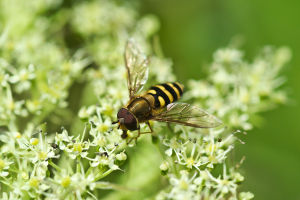Cats are enigmatic creatures, and their communication methods often leave us scratching our heads.
Unlike dogs, who are typically more expressive, cats have a subtle and diverse range of sounds, body language, and behaviors that convey their feelings and intentions.
But what exactly are cats trying to tell us? In this article, we will delve into the fascinating world of feline communication, decoding their purrs, meows, tail flicks, and more.
The Language of Meows
The most common sound associated with cats is the meow. But what do they actually mean? Unlike other animals that use vocalizations exclusively for specific situations, cats have adapted their meows as a tool to communicate primarily with humans, not other cats.
A cat's meow can convey a wide range of emotions, from a gentle greeting to a demand for food or attention. Kittens meow to their mothers, but mature cats usually reserve meowing for humans. A high-pitched meow may indicate excitement or distress, while a lower-pitched one could signal contentment or a request for something specific. Some cats even develop unique "vocabulary" with their owners, learning to meow in particular ways to achieve certain outcomes.
Interestingly, cats may meow more frequently when they are seeking attention, especially if they feel neglected. It's their way of calling out to their human companions, and over time, they learn which types of meows are more likely to get a response.
The Meaning of Purring
Perhaps one of the most soothing sounds in the world is the sound of a cat purring. Purring is typically associated with contentment, but it can also have other meanings depending on the context.
When a cat purrs while being petted or resting comfortably, it is usually a sign of relaxation and happiness. However, cats also purr when they are in pain, frightened, or anxious. Some researchers believe that purring may serve as a self-soothing mechanism, helping the cat to calm down in stressful situations. Additionally, the vibrations from purring are believed to have therapeutic effects, promoting healing in the cat's body by stimulating the production of certain growth factors.
A cat's purring is a versatile form of communication, signaling everything from pure contentment to the need for comfort or reassurance. It's one of the most complex and fascinating sounds in the feline communication repertoire.
Body Language: What Are Their Tails Telling Us?
While sounds are an essential part of cat communication, body language plays an equally crucial role. One of the most expressive aspects of a cat's body language is its tail. A cat's tail can reveal a great deal about its emotional state.
• Tail Upright: When a cat's tail is held straight up, it usually indicates confidence or happiness. A cat will often walk around with its tail held high when it is feeling secure and friendly.
• Curled Tail: A curled tail can indicate contentment and comfort, often seen when a cat is sitting or lounging in a relaxed position.
• Puffed Tail: If a cat's tail suddenly puffs up, this is typically a sign of fear or defense. It's a way for the cat to make itself look larger and more intimidating in response to a perceived threat.
• Wagging Tail: Unlike dogs, whose wagging tails are often associated with excitement or happiness, a cat's wagging tail can indicate irritation or frustration. If a cat is flicking its tail rapidly, it's usually a sign that it is becoming agitated or annoyed.
Ear and Whisker Signals
In addition to their tails, cats also use their ears and whiskers to communicate. These subtle signals can reveal a cat's mood or intentions.
• Ears Forward: When a cat's ears are pointed forward, it generally indicates curiosity or interest. This is the cat's way of paying close attention to something, whether it's a toy, a person, or a potential prey item.
• Ears Back: If a cat's ears are flattened against its head, it usually means the cat is feeling threatened or defensive. It's a sign that the cat is preparing to either fight or flee.
• Whiskers Position: A cat's whiskers are highly sensitive and play a crucial role in its perception of the world. When a cat's whiskers are forward and pointed, it usually indicates curiosity or hunting behavior. If the whiskers are pulled back or flattened against the face, it often signals discomfort or fear.
The Hiss: A Warning Sign
The hiss is one of the most unmistakable sounds a cat can make, and it's a clear warning. A hissing cat is usually feeling threatened, frightened, or cornered. It's a defensive behavior that serves as a deterrent to potential predators or aggressors. Hissing is often accompanied by an arched back, raised fur, and an open mouth, all of which amplify the warning.
While the hiss is typically a sign of fear or defense, it's also important to note that cats may hiss if they are in pain or feeling unwell. In these cases, the hissing might be a way to protect themselves while they heal.
Grooming: More Than Just Cleanliness
While cats are known for their grooming habits, there's more to this behavior than meets the eye. Grooming is an important form of self-care, but it can also be a way for cats to communicate with each other.
When cats groom each other, it is often a sign of bonding and affection. Cats will groom their family members or close companions to reinforce social bonds and maintain group cohesion. Additionally, when a cat grooms itself in front of a human, it can be a sign of trust and relaxation.
However, excessive grooming can also signal stress, anxiety, or illness. Cats who groom themselves obsessively may be trying to comfort themselves in response to a stressful environment or an underlying health issue.
Why Understanding Cats' Communication Matters
Understanding how cats communicate is crucial for building a strong and healthy relationship with them. By paying close attention to their vocalizations, body language, and behaviors, we can better meet their needs and respond to their emotions. Cats are incredibly intelligent and perceptive creatures, and they rely on us to interpret their signals accurately.
When we understand what our cats are really saying, we can create a more harmonious and enriching environment for them. Whether it's recognizing when they need affection or giving them space when they're stressed, effective communication enhances the bond we share with our feline friends.
Unlocking the Secrets of Cat Communication
Cats have a unique and multifaceted way of communicating with the world around them. From meows and purrs to tail flicks and ear positions, each gesture is a piece of the puzzle in understanding our cats' thoughts and feelings. By paying attention to their signals, we can deepen our relationship with them and ensure they feel heard and understood. As mysterious as they may seem, cats are always speaking—if only we take the time to listen.


